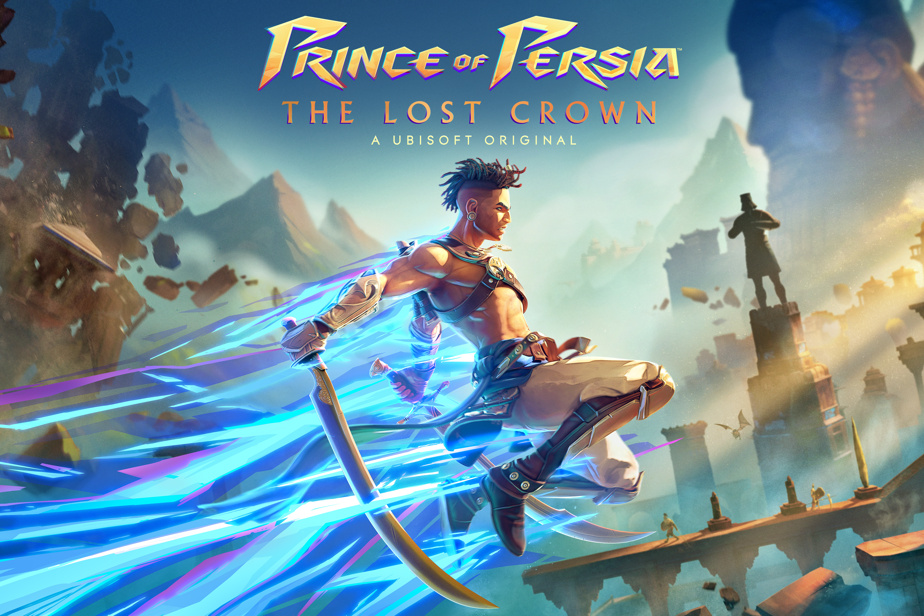We didn’t think it was possible to bring so much modernity back to a game born in 1989. And yet, Prince of Persia: The Lost Crown, which lands on shelves on January 18, achieves the rare feat of reminding us of the arcades and the PlayStation 2 while offering mechanics worthy of 2024. And the somewhat convoluted story as well as the doctorate necessary to master the combat do not spoil our pleasure too much.
It’s been nearly three decades since we first touched Prince of Persia, back then on the NES, with the basics that have never changed: a Persian prince (as one might suspect), traveling and jumping in 2D corridors in castles that look like settings from the Arabian Nights, playing with swords to take down guards. He must solve puzzles to unlock passages, has a few secret moves and regenerates by swallowing vials of red potion.
It is on this concept that Ubisoft Montreal brought the franchise back to life with the magnificent opus The Sands of Time in 2003 – still dozens of hours of life wasted in our case. Then it was the great oblivion from 2010 until today, while Ubisoft, led by the Montpellier studio, resurrected the franchise with The Lost Crown, which we tried on PS5. And it only takes a few minutes of play to find what made Prince of Persia stand out: our character, Sargon, masterfully manipulates his two swords, jumps from one wall to another to reach platforms, must unlock gears to move forward… and gets killed quickly. Because that too is part of the concept, at least in our case.
But back to the presentations of this rather unusual game, where the action takes place only in two dimensions, from top to bottom and left to right, but never in depth, except in cutscenes. The story begins after the victory of the Persians thanks to a group of elite warriors, the Immortals, including Sargon. His quest begins when the queen’s son, Prince Ghassan, is kidnapped. He will have to unravel the mysteries of Mount Qaf and its ancient city, which is home to Simurgh, the God of time.
Graphics is a curious hybrid. The cutscenes are three-dimensional and spectacularly crafted, as are the settings that we walk past, but into which we cannot enter. The dialogues appear, written, on the screen and are read by actors, while the characters are displayed, motionless. And the fights seem simple, limited to two dimensions, with four main keys at the start to strike, defend, sweep the ground or jump.
Error.
We understood after many deaths and a nearly two-hour tutorial that the combinations were endless. For example, we can throw our enemies into the air and hit them several times, slide then play the sword in a deadly way, jump four or five times to reach a high platform. When your opponent launches a yellow lightning bolt, you can stop it and unleash a devastating response with manga-style 3D cinematics. If the lightning is red, move away, it will crush you.
After the swords appear other weapons like the bow and the chakram, special abilities with the Shards of Athra to slow down time and regenerate your health, 38 amulets in total to increase your strength, your defense or your health, slow down the enemy or create a devastating vortex.
We have a map whose details are gradually revealed to accomplish our missions in the 13 sectors, to which are added 9 secondary quests. You can only make saves in rare places where Wak-Wak trees grow, which also allow you to modify your amulets and Athra Shards.
All these abilities will not be too much when facing the terrible bosses of the game, for which you must be at your best. There are nine of them, and each requires a particular technique, some showing themselves vulnerable to charged attacks, others rather sensitive to arrows.
The narration which links all his adventures is rather well put together, with small touches of betrayal and humor, and Sargon proves to be a rather endearing hero. But the story, the main arc of which can be completed in around thirty hours, is not the strong point of this game, which is mainly focused on discoveries, epic battles, mythology and fantastic settings.
And this order, Ubisoft and the Montpellier studio in particular fulfilled it wonderfully.
